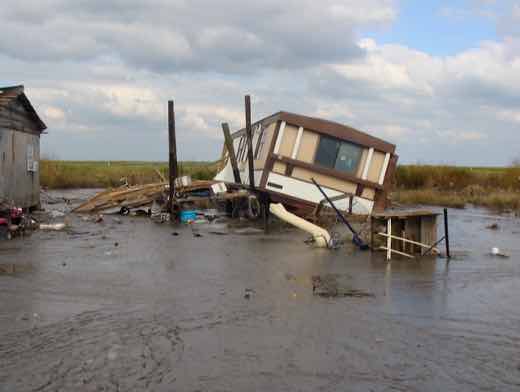America's Coast is Ragged
Ivy Raff
America’s coast is ragged at the bottom
You know this from maps, of course
But you don’t know it until you fly down into Louisiana
on a late sultry afternoon,
the Ocean of Lake Pontchartrain shimmering under a causeway that yawns on forever,
a lazy finger trailing a line.
Haphazard green curls dipping down are impossibly,
somehow,
ancestral homes
Where native people absconded in boats,
out on these wild tendrils of half-land,
to escape Jackson’s Trail of Tears
Where their descendants speak a half-mouthed English
and bake their wrinkled necks in the same searing sunsets
The boats no longer promise salvation
“America’s First Climate Refugees,” the headlines would read
if there were any.
But there are only a few dozen families,
and Choctaw displacement is long since a background backwater hum,
and that the United States could be a place refugees come from
is too inconceivable to print.
Soon comes the quiet relocation
to federal lands in the interior,
away from their drowned islands,
their eroded homes
crumbled under with the oil conglomerates’ channel-digging
The Trail has looped down for them at last,
one hundred sixty years on
The canals dug to control the waters of the Mississippi River have prevented silt depostion in the river delta and have led to massive and continuing loss of coastline in Louisiana.
